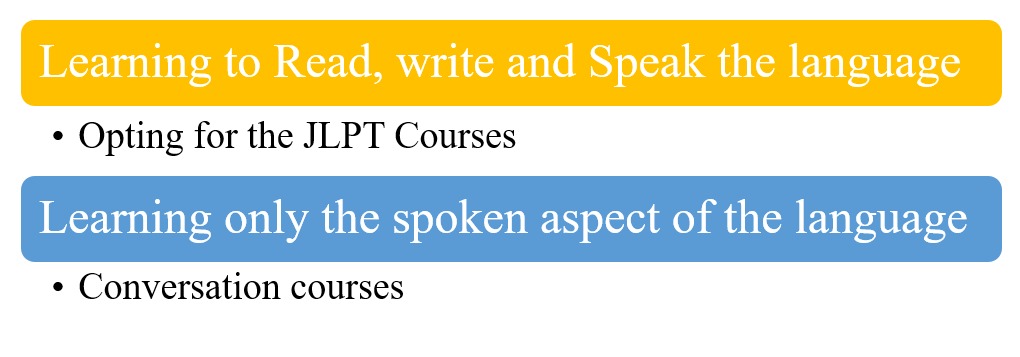If you are a beginner looking at learning the Japanese language, here are the basic details that will help you make your decision.
There are two ways to go about learning this language:

In this article, let us discuss in detail the first option, opting for the JLPT courses.
JLPT stands for the Japanese Language Proficiency Test. This is the certification exam conducted by the Government of Japan to evaluate the level of a candidate in the Japanese language. It is usually conducted twice a year worldwide on the same dates. The exam months are July and December. The test is usually conducted on the first Sunday of both these months.
There are five JLPT levels in learning the Japanese Language.
It goes in the reverse order starting from JLPT N5 progressing to JLPT N1

JLPT N5
This is the beginner level, your entry point in learning Japanese. The course aims to equip the participant to fluently be able to speak, read, and write every day/survival level Japanese. The ability to understand and respond back to simple, short sentences in Japanese is covered. Content Covered will begin from Greetings, Days of the week, Months, Numbers, Directions (Right/Left /Up/down), conversations at home and will progress to verbs-based conversations. Basic functional verbs for example (Eat, Sleep, Talk, Drink, Play, Catch, and many more verbs) with all their past/present and future conjugations will be covered. It will include video and audio lessons for around 25 lessons with varying scenarios and all the vocabulary used in them.
JLPT N4
This is a sequel to the JLPTN5 course. The course covers more vocabulary and extends the scope of learning to a significant extent. Understanding simple passages/ conversations and contributing to a certain extent to those conversations become possible. A wide range of grammar particles are introduced and their usages in various contexts are taught as part of the curriculum
JLPT N3
JLPT N3 is equivalent to an Intermediary level in Japanese Language Learning. From a fluency perspective, the learner is able to converse, read, write, and understand the majority of everyday conversations and even grasp the main points of difficult conversations to a certain extent. So, one can say that the learner is functionally capable of using Japanese in her/his work. Many companies that look for people with Japanese Language skills have JLPT N3 as the entry criteria.
Our Specific JLPT N3 course focuses on the following areas:
- Training the candidates to take up JLPT N3
- Enabling learners to speak business Level Japanese
- Resume writing, mock interviews, and making our students “JOB READY”
- Provide basic translation and Interpretation training
- Facilitate frequent conversations with native Japanese people to hone one`s spoken skills
- Cultural events to have a holistic approach in learning the language by learning Japan`s culture
JLPT N2 and JLPT N1
These are higher levels of learning where one can interact seamlessly in all the official, personal and everyday situations. The writing, speaking and comprehending abilities are considerably higher than other JLPT levels and the learner is able to experience the language and culture from a much higher vantage point.
From a scope perspective, JLPT N2 covers around 1000 Kanjis and 6000 kotobas (Vocabulary)
For more details on the courses/enrollments check out the FB page / you can reach out to us

